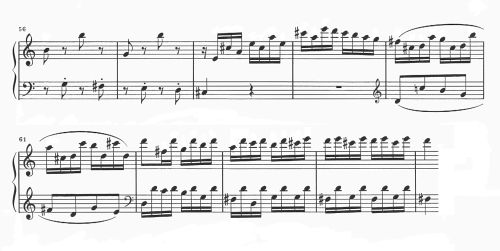Before, I’ve speculated that many of Beethoven’s texts read as parody — a mockery of 18th-century styles and practices.
In some postmodern music — John Zorn or Rzewski’s People United — musical styles, harmonic behaviors, or keyboard textures come on and off like readymade shirts in a fitting room.
Though now it may be harder to discern (our subtle reception of old stylistic distinctions may be dulled), Beethoven does something remarkably similar. In a single parodistic passage of piano writing, three distinct styles come and go.
Here in the piano part of the rondo from Beethoven’s C-Major Concerto, the violin virtuoso gives way to Bachian keyboard chromatic contrary motion (mm. 60-61), and then Italian opera buffa singing (or playground NA-na-na-na-NA-na!).


I’ve often had the same thought about Beethoven’s rapid use of referential/structural “jump-cuts”. When I first heard some late string quartets I gave up on trying to force them into some kind of quasi-sonata form and just figured it was some kind “Zorn”-ish cartoon music from the turn of the 19th century. Great post!